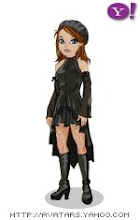take this for instance we are living with very simplified lifestyle,
and for instance, no one had money to begin with.
setting:-
barber gives hardressing services for $1 per hair cut.
author writes and sells his book for $1 per booklet.
flourist plants and sells her flowers for $1 per bouquet.
housekeeper does cleaning services for $1 per job.
farmer sells his poultry for $1 per chicken.
and you work as a clerk for $1 a day.
you then take your $1 salary to buy a chicken from the farmer.
farmer takes the $1 you've given him and hands you the chicken.
farmer uses the $1 and engaged in housekeeper to clean his home.
housekeeper gets paid with the $1 she is charging.
she went on to buy some flowers from the florist, $1 per bouquet.
flourist decides to purchase a novel with that $1 she earned.
book sellers receives $1 for the sale and went to trim his hair for $1 at the barbers.
barbers pay you $1 for clerical work at his shop.
at the end of the cycle, you get paid with the original $1 you had spent and you
earned a chicken, farmer had his house cleaned, cleaner had flowers to admire,
flourist gets a new novel, author gets a new hairdo, barber gets his bookeeping done
AND you still get paid $1 again.
there was no money to begin with, remember?
so how did we all end up with more money and value added?
(be it a tangible or non-tangible)
first, we have to add value. that is do a job, give a service or produce something.
second, we have to spend. that is, part with the money.
the cycle continues as long as there is both "in" & "out" and money is the conductor, hence currency.
Wednesday, February 14, 2007
Subscribe to:
Post Comments (Atom)

No comments:
Post a Comment